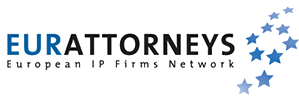The European Union (EU) Trademark is a trademark valid throughout the European Union, i.e. in the following 28 Countries: Austria, Belgium, Bulgaria, Czech Republic, Cyprus, Croatia, Denmark, Estonia, Finland, France, Germany, Greece, Ireland, Italy, Latvia, Lithuania, Luxembourg, Malta, Netherlands, Poland, Portugal, United Kingdom, Romania, Slovakia, Slovenia, Spain, Sweden, and Hungary.
The application for a EU trademark (EUTM) is filed at the European Union Intellectual Property Office (EUIPO) – previously named Office for Harmonization in the Internal Market (OHIM).
Registration procedure
Once filed, the European Union trade mark (EUTM) application is subject to the examination carried out by EUIPO. The Office shall verify the correctness of the formal requirements of the application (e.g.: name of the applicant, the list of goods and services, the representation of the trademark, the payment of fees, etc.) that the mark is distinctive, it is not contrary to law, public order, decency or is not likely to mislead the public. If there are no objections or if they are overcome following an adversarial procedure established with the EUIPO, the trade mark application is published in the Official Journal, in the 23 official languages of the European Union. Third parties who have earlier rights may oppose the registration of the trade mark application within 3 months from the date of publication. If no oppositions are filed, the mark is registered.
Timing for obtaining the registration
Should no official objections be raised by EUIPO or oppositions be filed by third parties, a EUTM normally comes to registration after about 5-8 months from the filing date. However, it has been recently introduced a “fast track” procedure relating to the filing of EUTM application that enables a significant reduction in the examination timing, but does not affect the terms of three months for filing the opposition.
Benefits
Since the EUTM is a unitary right valid throughout the European Union, it undoubtedly allows a significant cost savings compared to the cost that would result from the filing of trademark applications in every single country of the European Union. Moreover, for every subsequent enlargement of the European Union, all EU trademarks, registered or simply filed, are automatically extended to the new Member States without further formalities or payment of additional fees. Moreover, the use of the mark in a geographically limited area of the European Union (as the case, even in just one of the Member States) might be sufficient in order to prevent the revocation for non use of the mark, provided that such use is effective.
